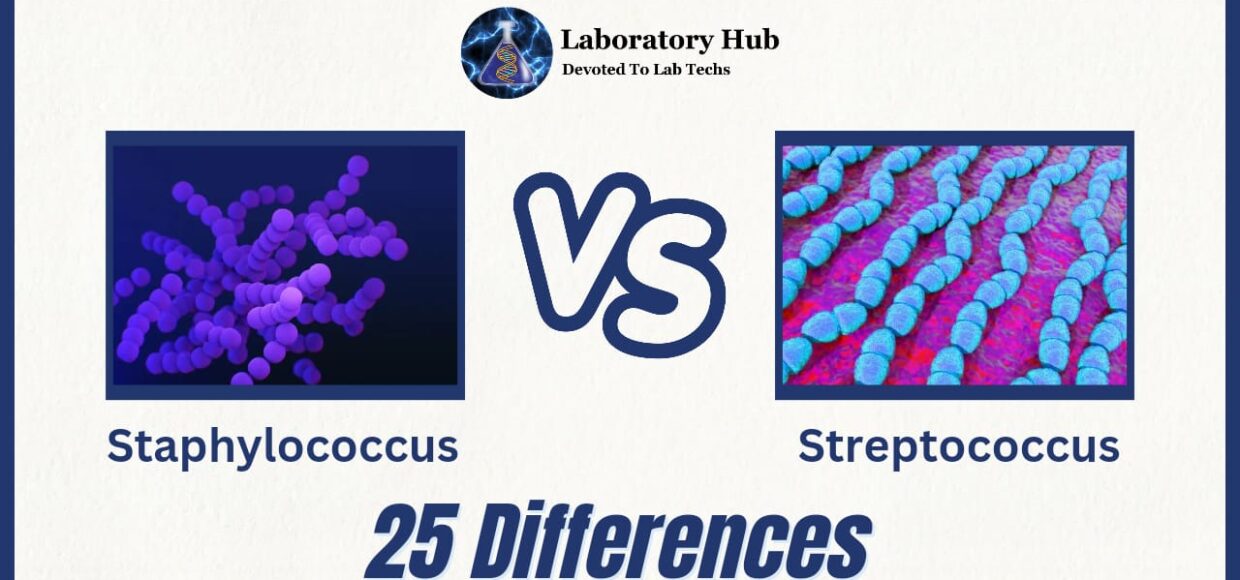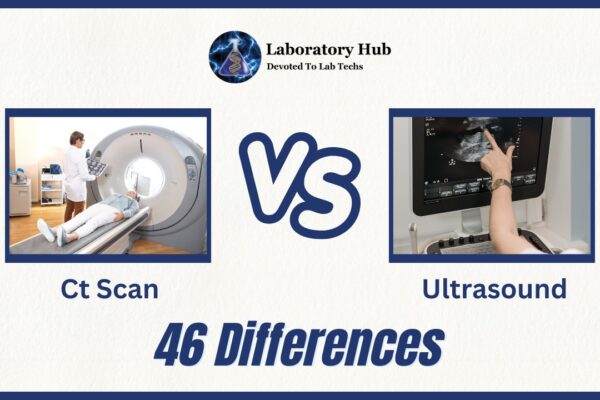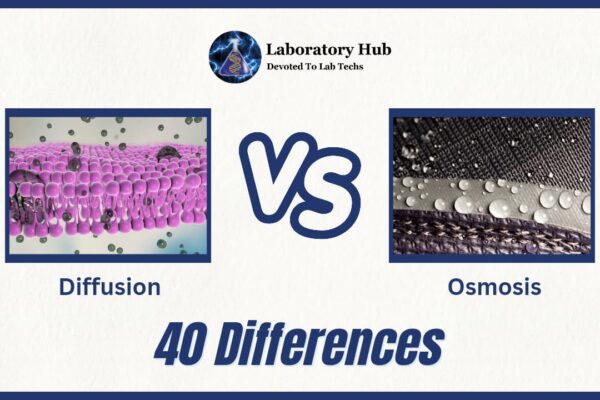Staphylococcus vs Streptococcus- 25 Major Differences
Firmicute bacteria Staphylococcus and Streptococcus are prevalent. They’re comparable but different. Understanding these two bacterial families is essential for diagnosing and treating illnesses caused by them.
The most well-known and clinically relevant species of Staphylococcus is S. aureus. Spherical Gram-positive bacteria produce clusters or grape-like formations. Staphylococcus bacteria are often present on human skin and mucous membranes, and certain strains can cause infections ranging from minor skin infections to pneumonia and sepsis. In hospitals, Staphylococcus aureus’ antibiotic resistance is a big problem.
However, Streptococcus is a genus of bacteria with several species, including Streptococcus pyogenes and Streptococcus Pneumonia. Gram-positive, spherical streptococci form chains or pairs. Streptococcus species, widely prevalent in the respiratory system, can cause strep throat, skin infections, pneumonia, and invasive disorders like meningitis. Strep throat is caused by Group A Streptococcus.
Enzymes distinguish Staphylococcus and Streptococcus. Coagulase distinguishes staphylococci from streptococci. Coagulase-positive staphylococci like Staphylococcus aureus produce more severe infections than coagulase-negative ones.
Their antibiotic susceptibility differs. MRSA, especially, is resistant to numerous antibiotics. Streptococci, however, respond to more drugs. Antibiotic stewardship is important because some Streptococcus Pneumonia strains are resistant to particular antibiotics.
Staphylococcus and Streptococcus are two types of bacteria that can cause human illnesses. Streptococcus chains, while Staphylococcus clusters. Staphylococcus aureus is a clinically relevant species linked with antibiotic resistance, whereas Streptococcus comprises infections including Group A and S. Diagnosis and therapy require distinguishing these microorganisms. Antibiotic resistance is a global issue, thus more research and monitoring are needed to fight these germs.
Also read: Acute disease vs Chronic disease – 15 Differences
S. No. | Aspect | Staphylococcus | Streptococcus |
1 | Shape | Spherical, forming clusters | Spherical, forming chains |
2 | Gram Stain | Gram-positive | Gram-positive |
3 | Arrangement | Irregular clusters | Chains or pairs |
4 | Catalase | Catalase-positive | Catalase-negative |
5 | Oxygen Requirement | Facultative anaerobes | Facultative anaerobes |
6 | Hemolysis | Some species are hemolytic | Can exhibit various hemolysis patterns |
7 | Coagulase Test | Can be coagulase-positive | Coagulase-negative |
8 | Species Examples | Staphylococcus aureus, Staphylococcus epidermidis | Streptococcus pyogenes, Streptococcus pneumoniae |
9 | Diseases Caused | Skin infections, wound infections, pneumonia | Strep throat, scarlet fever, pneumonia, meningitis |
10 | Cell Wall | Contains peptidoglycan and teichoic acids | Contains peptidoglycan and lipoteichoic acids |
11 | Virulence Factors | Exotoxins, surface proteins (e.g., protein A) | Exotoxins (e.g., streptolysin), surface proteins |
12 | Antibiotic Resistance | Can develop antibiotic resistance | Can develop antibiotic resistance |
13 | Colonization Sites | Skin, mucous membranes, nasal passages | Respiratory tract, oral cavity, skin |
14 | Toxin Production | Produces various toxins (e.g., enterotoxins) | Can produce toxins (e.g., streptolysin) |
15 | Enzymes Produced | Coagulase, hyaluronidase, lipase, protease | Streptokinase, hyaluronidase, DNase, proteases |
16 | Antigenic Variation | Can exhibit antigenic variation | Can exhibit antigenic variation |
17 | Transmission | Direct contact, fomites, healthcare settings | Respiratory droplets, direct contact, fomites |
18 | Habitat | Ubiquitous, found on skin and in the environment | Ubiquitous, found in humans and animals |
19 | Epidemiology | Nosocomial and community-acquired infections | Community-acquired infections, epidemics can occur |
20 | Treatment | Methicillin-resistant strains require alternative antibiotics | Antibiotics specific to the strain, penicillin is effective for many strains |
21 | Host Immune Response | Can evade immune response through various mechanisms | Can trigger immune response (e.g., autoimmune complications) |
22 | Diagnosis | Culture and identification from clinical specimens | Culture and identification from clinical specimens |
23 | Adherence Mechanisms | Surface proteins, biofilm formation | Surface proteins, capsule formation |
24 | Virulence Factors | Exotoxins, surface proteins (e.g., protein A) | Exotoxins (e.g., streptolysin), surface proteins |
25 | Examples of diseases | Skin infections, wound infections, pneumonia | Strep throat, scarlet fever, pneumonia, meningitis |
Frequently Asked Questions (FAQS)
Human infections can be caused by Staphylococcus and Streptococcus bacteria.
Direct contact with sick people, contaminated items, or respiratory droplets can spread both bacteria.
Staphylococcus bacteria cause boils, cellulitis, pneumonia, and bloodstream infections.
Streptococcus bacteria cause strep throat, impetigo, pneumonia, bloodstream infections, and necrotizing fasciitis.
Spherical Staphylococcus bacteria cluster like grapes. Streptococcus bacteria are spherical but chain.
Staphylococcus and Streptococcus bacteria exhibit various antibiotic susceptibility patterns based on the species and strain.
Both bacteria may cause life-threatening illnesses, especially when they enter the circulation or harm key organs.
Handwashing can prevent these germs from spreading. Wound care and avoiding infectious people can also lower infection risk.
Both bacteria are part of the cutaneous, respiratory, and mucous membrane flora. They can induce infections in some cases.
Both bacteria can acquire antibiotic resistance, making treatment harder. Use antibiotics wisely to reduce resistance.







